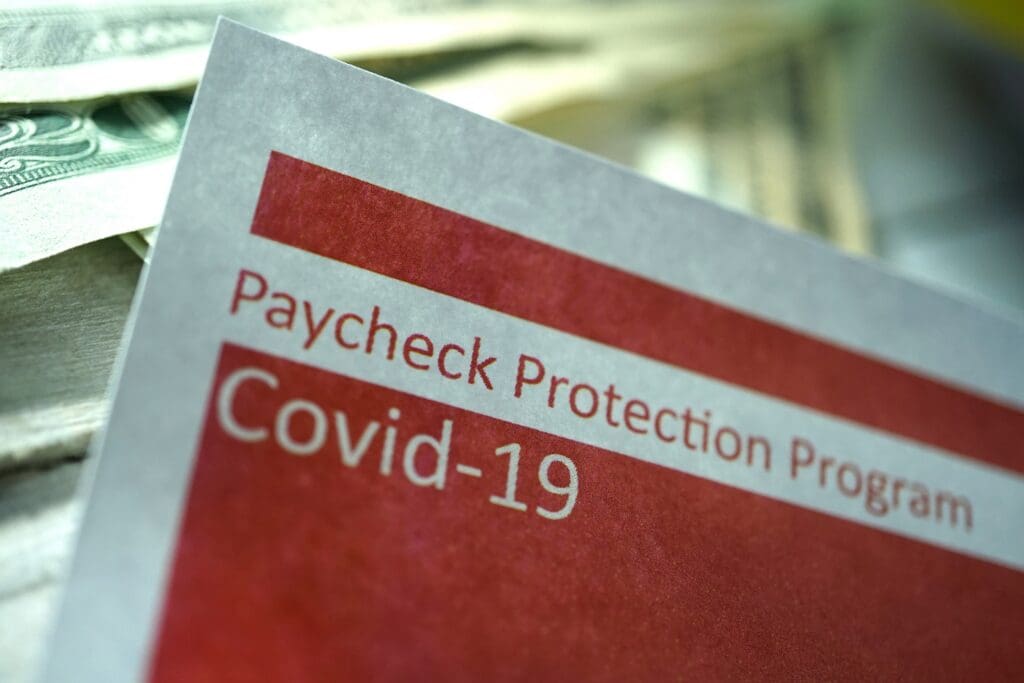The Employee Retention Credit, or ERC, has offered relief to tens of thousands of businesses that were impacted by the COVID-19 pandemic. Businesses have been able to qualify for the credit by establishing their eligibility in one of two ways. The first way to establish eligibility is if the business was subject to a governmental order to fully or partially suspend operations.
This can be a governmental order that was issued at the federal, state, city, or other local levels. The other way to establish eligibility is if your business experienced a substantial decline in gross receipts in 2020 and/or 2021.
To be eligible for the ERC in 2020, a business must have a decline in gross receipts of at least fifty percent compared to the same quarter(s) in 2019. For 2021, businesses can qualify if their gross receipts are 80 percent or less than their gross receipts for the same period in 2019.

How Does the ERC Affect Income Taxes?
The Employee Retention Credit is not a loan or a tax deduction. Instead, it’s a dollar-for-dollar rebate on a company’s income taxes. If a business had a minimal tax liability or owed no income tax in 2020 or 2021, the credit can still be applied toward the business’s payroll taxes.
The amount that employers can recoup through the Employee Retention Tax Credit depends on how many employees were kept on the payroll. Employers can receive up to $5,000 per employee who was kept on the payroll in 2020. Businesses can receive up to $7,000 per quarter for each employee who was kept on the payroll for each of the first three quarters of 2021.
This comes to a total of $21,000 for 2021. Therefore, if an employee was kept on the payroll in 2020 and 2021, the business could receive a total tax credit of up to $26,000 per eligible employee.
Is ERC Taxable Income?
The good news is that your ERC refund is not taxable income. However, the ERC will affect what payroll deductions you can claim. Businesses that receive the ERC must reduce their payroll expense deduction by the amount of the credit. This is so that a taxpayer cannot “double dip.”
If a business is applying for the ERC retroactively using IRS Form 941-X, and they’ve already submitted their income taxes for that year, the business may need to amend their income tax return to adjust the payroll deduction in these circumstances.

How is the ERC Applied Against Payroll Taxes?
The Employee Retention Tax Credit is a refundable and non-refundable quarterly tax credit. The non-refundable credit allows the government to refund the employer’s share of employment taxes (FICA and Medicare). The refundable credit is a payment from the government beyond the amount of employment taxes paid by the employer during 2020 and 2021. The credits were designed to incentivize employers to retain employees during COVID-19.
Were PPP Loans Eligible for the ERC?
Initially, businesses that received PPP loans weren’t eligible for an Employee Retention Credit. However, through the Consolidated Appropriations Act of 2021, eligible businesses that received a PPP loan can now apply for the ERC — retroactively to 2020. Note that you cannot claim the ERC for qualifying employee wages paid with funds from a forgiven PPP loan.
How Do I Account for the ERC?
Although claiming the ERC is beneficial for most businesses, it also has the potential to affect their 2020 and 2021 financial statements. A company’s ERC should be recorded as a credit to grant income and a debit to accounts receivable (A/R). Businesses that received their Employee Retention Credit as an advance payment should credit the refundable advance liability and debit the cash.
Whichever method you select for accounting for your employee retention income tax credit, make sure to include disclosures in your financial statements about the accounting method/standard you chose. This will help ensure your compliance with IRS rules and regulations.
If you’ve yet to apply for the ERC, there’s good news: you still have time. Although the Employee Retention Credit program has already ended, an eligible employer still has time to claim it by filing a Form 941-X for relevant quarters. For all four quarters in 2020, the deadline to apply is April 15, 2024; for all quarters in 2021, the deadline is April 15, 2025.
Conclusion
There’s a lot of information to comprehend about this valuable tax credit. Some companies are unsure about what constitutes wages paid, while others simply don’t know how such a payroll tax credit affects their income tax return.
If you are unsure about how to file for the ERC or if you need assistance preparing and submitting your application in a timely manner, we recommend working with one of our experienced tax professionals. Here at StenTam, our tax specialists can guide you through the process. We can also answer any questions you may have along the way, so you can feel confident about the accuracy and completeness of your filing. Don’t miss out on potential savings – schedule a meeting with a tax specialist now.
FAQs
How Long Does It Take To Receive an Employee Retention Credit Refund?
This refund process varies. Typically, though, it takes the IRS between six to nine months to issue ERC refunds. Generally, smaller refunds (under $80K per qualifying quarter) process faster than larger refunds (over $80K per quarter).
What Constitutes Qualifying Businesses Under the ERC?
Under the CARES Act of 2020, businesses may be eligible for the ERC if they had employees and operated a trade or business. This includes tax-exempt organizations. However, with limited exceptions, it does not apply to governments or their agencies and instrumentalities.
A small eligible employer for 2020 is an employer that had 100 or fewer full-time (30 hours per week or more) employees on average per month in 2019, and for 2021 had 500 or fewer full-time employees on average per month in 2019.
Your business may be eligible for the ERC if its operations were fully or partially suspended by governmental COVID-19 orders limiting commerce, travel or group meetings. Or, if you experienced significant declines in gross receipts during 2020 (50 percent or more versus 2019) or the first three quarters of 2021 (20 percent or more versus 2019). If your business started to operate on or after February 15, 2020, it may qualify to claim the ERC for the third or fourth quarters of 2021 as a recovery startup business.
Does the ERC Include Medicare Taxes Paid?
Yes. The Employee Retention Credit applies to employment taxes such as withholding, FICA and Medicare.
Can Recovery Startup Businesses Claim the ERC?
Yes. Recovery startup businesses can claim the ERC for qualified wages paid after June 30, 2021, and before January 1, 2022. According to the American Rescue Plan Act, this type of business is eligible for the ERC if it started on or after February 15, 2020, has one or more W2 employees (not including owner-operators or family members) and has annual gross income/receipts that do not exceed $1 million for the individual 2020 and 2021 tax years.







